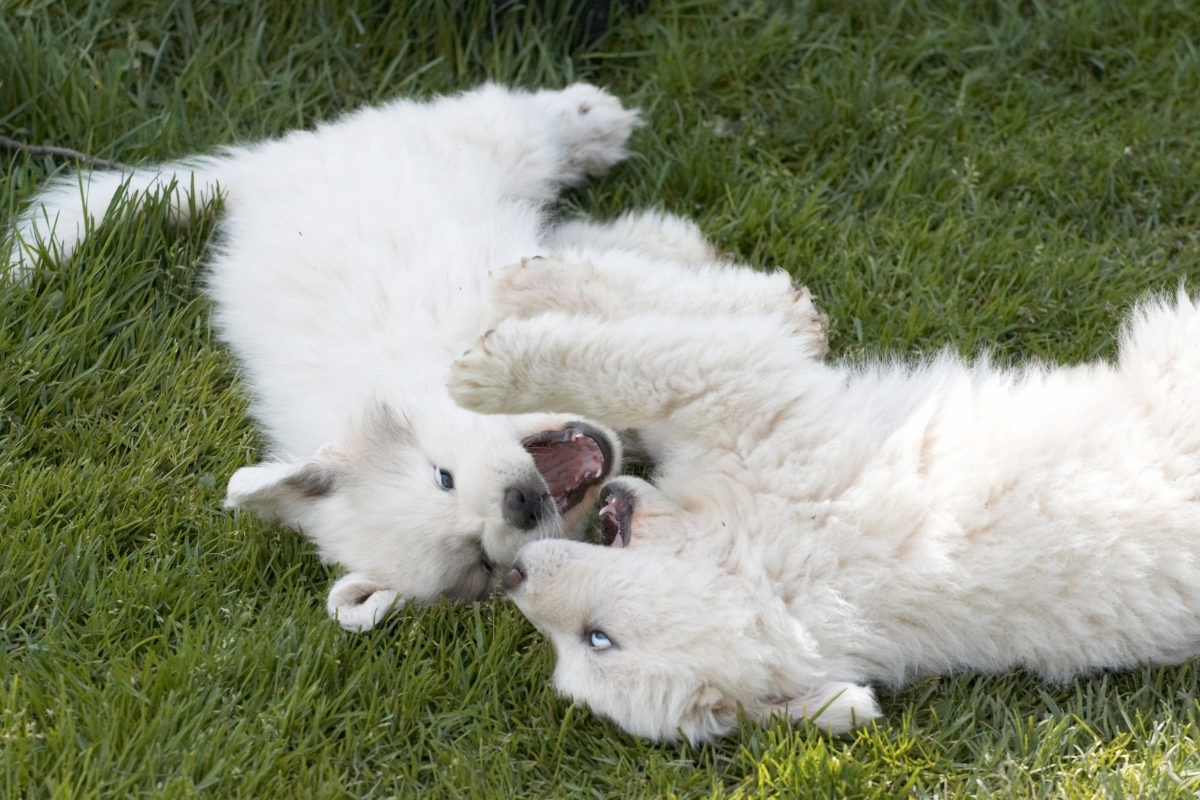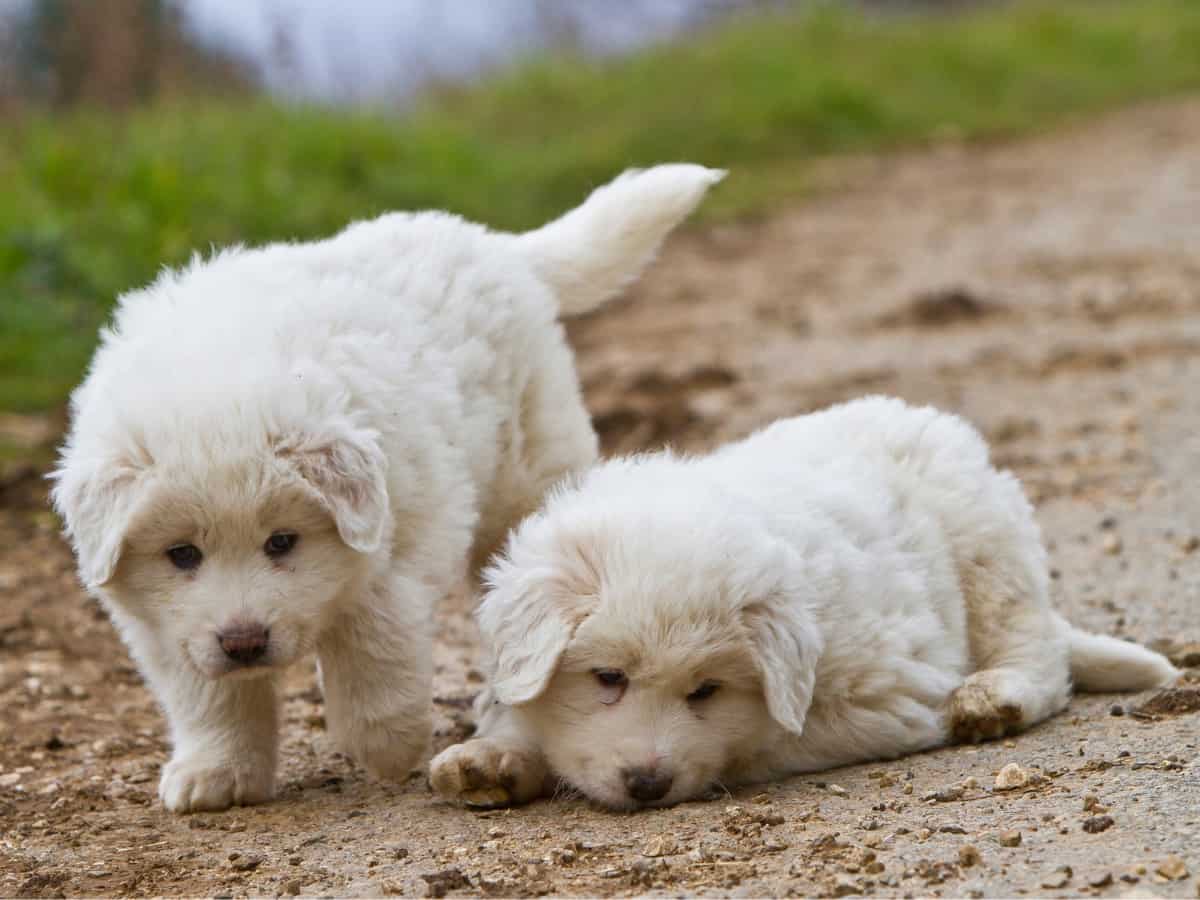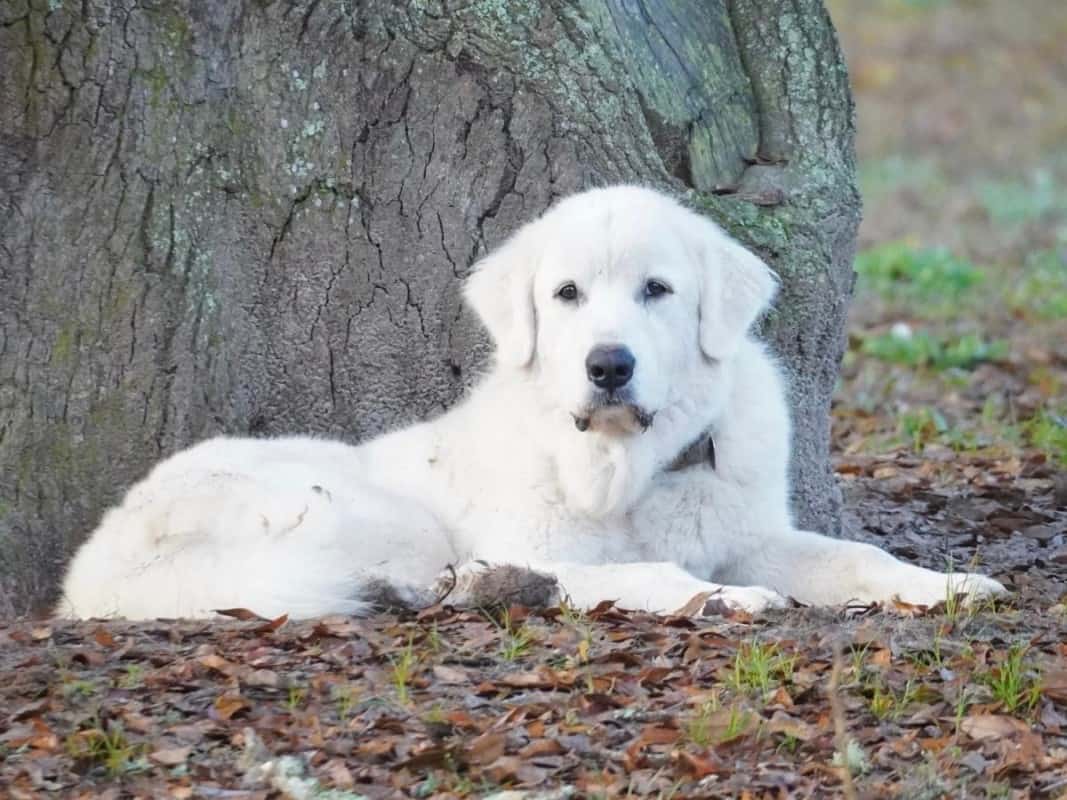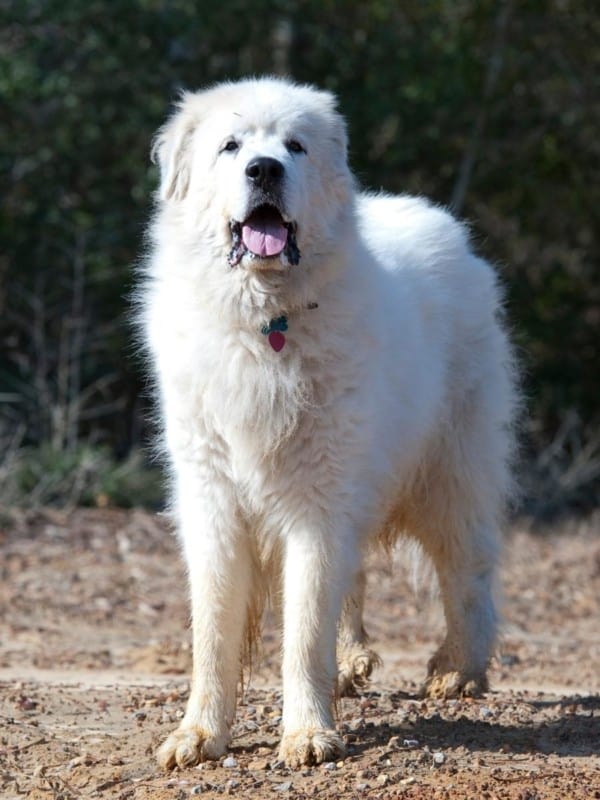Are you dreaming of adding a fluffy, four-legged member to your family? If you’re considering a Great Pyrenees as your first dog, you’re in for a journey filled with love, learning, and a bit of fluff!
This majestic breed, known for its gentle nature and impressive size, often captures the hearts of dog lovers at first sight. But are they the right fit for first-time dog owners?
Great Pyrenees can be good first dogs for prepared owners. Known for their gentle, protective nature, they’re great family pets but need space, consistent training, and early socialization. Their large size and guarding instincts require lots of commitment and regular grooming.
In this blog, we’ll explore the unique characteristics of the Great Pyrenees, from their calm demeanor and protective instincts to their grooming needs and exercise requirements.
Understanding the temperament, training, and care of these gentle giants is crucial for a harmonious home, especially if you’re new to the dog-owning world.
So, let’s embark on this exciting journey to discover if a Great Pyrenees is the perfect first dog for you!

Are Great Pyrenees Good For First-Time Owners?
Ranking only 70th on the latest AKC list of the most popular dog breeds, the Great Pyrenees, also called Pyr or Pyrenean Mountain Dog outside of North America, isn’t among the most popular pets.
This ranking implies that dog owners looking to get a new puppy will consider 69 other breeds before giving the Great Pyrenees a chance. But does that make this breed a bad dog, or are the Great Pyrenees good first dogs?
Let’s check out their breed profile to get a better idea.
| Great Pyrenees | Breed Characteristics |
|---|---|
| AKC Group | Working |
| Origin | France (Pyrenees Mountains) |
| Type | Working / Companion / Showing |
| Breed Size | Large |
| Height | 27-32 inches (Males) 25-29 inches (Females) |
| Weight | 100 pounds or more (Males) 85 pounds or more (Females) |
| Temperament | Calm, Patient, Intelligent, Independent, Loyal, Energetic, Brave, Protective, Confident, Powerful, Affectionate, Playful, Good Family Pet |
| Appearance | Elegant, Majestic, Broad Head, Wide and Deep Muzzle, Black Nose, Dark Brown Eyes, Long and Bushy Tail, Well-balanced, V-Shaped Floppy Ears |
| Lifespan | 10-12 years |
| Health Issues | Bloat (GDV), Hip Dysplasia, Eye Disorders, Cancer |
| Coat Colors | White |
| Coat Type | Double-coated, Medium-Long Length |
| Shedding | Heavy |
| Grooming | Moderate |
| Easy to Train | Yes |
| Exercise Needs | Medium-high |
| Hypoallergenic | No |
| Child Friendly | Yes |
| Pet Friendly | Yes |
| Good for new owners | Yes |
| Cost | $1,000 – $2,500 |
As you embark on the journey of understanding the Great Pyrenees as a good first dog, it’s essential to delve into the various facets of their breed profile and characteristics.
Each of the following 11 subheadings will guide you through the unique attributes of this majestic breed, from their noble temperament to their distinct physical features.
Let’s uncover the layers that make the Great Pyrenees a truly remarkable and beloved dog breed.
1. They Are Smart at What They Were Bred For
As dogs bred to guard sheep and later humans, Great Pyrenees are considered smart for the job they were bred for.
They originated from the French side of the Pyrenees Mountains and, as livestock guardians, protected flocks from predators such as wolves or bears.
However, in other aspects of intelligence like trainability, Pyrs are deemed to be only of average intelligence. So, they are not the smartest of dogs, but they are intelligent in their breed role.
Generally, dog smartness is understood in terms of their ability to display behaviors associated with intelligence, such as cognition, memory, information retrieval, and application in new situations, among others.
These behaviors include:
- The ability to read human body language, such as gestures.
- The expertise to hear, learn, and act upon human verbal commands.
- Their ability to demonstrate a level of cognition by engaging in deception or tricking behavior such as escaping.
- Not forgetting commands when they don’t practice them for some time.
- Their ability to show concern for humans in distress with gestures like cuddling.
- Their ability to solve puzzle toys.
- Their skill to master new techniques.
According to Pet Net ID, a public pet registration platform, Great Pyrenees will score three out of five in all these areas after completing a related IQ test. This implies that the Great Pyrenees have above-average intelligence.

2. Great Pyrenees Are Good With Kids
So, we’ve established that they are good dogs, but are Great Pyrenees good family dogs?
Actually, yes.
Great Pyrenees are good with kids and will put up with a child’s playful nature while being the child’s protector and companion.
In their guarding nature, Great Pyrenees consider children as their flock to watch over.
As such, Pyrs will enjoy playing tug of war, a game of tussle, or even pulling a carriage with your kid on it. However, the Great Pyrenees will not give up their guarding dominance even with children.
This means that your Pyr will play the role of protector and companion with your children but won’t let the kids be his masters.
This is why Great Pyrenees should be supervised around children and should never be left alone with overly active children who can get on their nerves.
3. They Are Great Guard Dogs
Great Pyrenees are perfect guard dogs because they were initially bred to guard sheep. They will show common guard dog qualities like being:
- Territorial
- Watchful
- Fearless
- Dominant
- Hostile with strangers
- Protective
- Loyal to family members
As the keen guard dogs that they are, Great Pyrenees consider any stranger, human or animal, to be a predator that should be kept away. They will readily bark at strangers and unknown guests in the home.
According to the US National Great Pyrenees Rescue, Pyrs are often surrendered to rescue homes because their noise-making behavior often upsets their neighbors.
This implies that the Pyrenees might not be your dog of choice if you live in an apartment (not to mention their large size), but they are a perfect pick for homeowners living in the countryside.
Watch This Great Pyrenees In Action…
4. Although Heavy Shedding, Their Coat Is Easy To Manage
Great Pyrenees are heavy shedders and will shed all year long. They will also blow their coat when seasons change, creating a snowstorm of fur.
This means Pyrs are not hypoallergenic and will leave plenty of their white fur around your house.
Because of their continued shedding, you should brush Great Pyrenees’ coats once or twice weekly to remove loose fur.
Nonetheless, there’s a good side to their heavy-fur coat; it does not tangle and is dirt-resistant. That’s why your Pyr will always carry that elegant white or white with markings coat.
Also, do not clip your Great Pyrenees fur in summer because they need their hair to protect their skin from the sun.
If fur stirs up your allergies, do not go for a Great Pyrenees. If you already own a Pyr, you know that white fur on your black clothing is inevitable. Overall, owning a Great Pyrenees should be paired with owning a good vacuum cleaner!
5. Great Pyrenees Aren’t Naturally Aggressive
The Great Pyrenees are not aggressive in nature. However, because they naturally tend towards guarding and protection, Pyrs can turn aggressive when they perceive a human or another animal as a threat.
The AKC breed standard for the Great Pyrenees describes this breed as:
- Gentle
- Patient
- Affectionate
- Of quiet composure
Although the Great Pyrenees can be independent and self-willed and tend to be territorial and protective towards their own, excessive aggression toward humans should be considered a fault.
Proper training early in life is essential in taming any aggressive tendencies in Pyrs. Older, well-trained Pyrs may show signs of aggression if they become less tolerant or suffer pain and discomfort due to diseases.
However, being aggressive in older age is not exclusive to Great Pyrenees. A study of purebred dog breeds (Pyrs not included) found that advanced age increased the likelihood of aggression toward people among dogs.

6. They Can Be Trained With Patience and Consistency
The Great Pyrenees aren’t easy to train. As working dogs developed to independently guard sheep, Pyrs have a mind of their own and will readily ignore your commands or act on them indifferently.
However, that doesn’t mean they can’t be trained with a bit of patience and the right techniques.
Although working dogs are placed among the most trainable categories, every dog is unique, and each dog breed can show variation from this general rule.
For example, in Stanley Coren’s ‘Intelligence of dogs’ list, Doberman Pinschers feature at number five in the category of the brightest dogs, while Great Pyrenees are listed at position 64 in the category of dogs with fair working and obedience intelligence. But both are working breed dogs.
Dogs in the category of “fair working and obedient intelligence” will:
- Understand new commands only if repeated 40-80 times.
- Obey a command the first time it’s given only 30% of the time.
This could explain why the Great Pyrenees require extra patience and persistence in obedience training.
However, as with all dogs, Pyrs will learn better and faster if training is started early in life and if trainers use positive reward-based techniques.
7. They Are Friendly With Family but Reserved With Strangers
Despite their apparent serious disposition, Great Pyrenees are extremely friendly with family. They consider family members their own flock to love, protect, and guard.
However, they have reservations about human and animal strangers, as these are considered intruders.
Because of this, Great Pyrenees will enjoy a cuddle next to their owner and family members but will act cautious, appear extra alert, or show aloofness when meeting new people.
The AKC gives the Great Pyrenees a 5/5 mark for affection with family and only a 3/5 for openness to strangers.
8. They Can Live With Other Pyrs
Overall, Great Pyrenees get along well with other dogs. However, while a Pyr will be patient with the playful puppy, they can be rough with dogs of the same sex and would rather live with Pyrs of the opposite sex.
The Great Pyrenees easily bond and enjoy the company of other Great Pyrenees. If the companion Pyr has a compatible temperament, the bond is even stronger. Ensuring compatibility is key when rehoming Pyrs.
Also, because they are livestock guard dogs with territorial and dominant tendencies and need a sense of control, Pyrs prefer sharing their home with other Great Pyrenees of the opposite sex.
Two Great Pyrenees of the same sex can be hard to manage and may easily get into unstoppable fights. Incompatibility between two adults of the same gender is another of the reasons Pyrs are often brought back to rescue homes.
9. Great Pyrenees Are Generally Healthy Dogs
Great Pyrenees are generally healthy dogs and will live up to 10 to 12 years with good care. Nonetheless, Pyrs are also genetically predisposed to certain genetic diseases, including:
- Bloat
- Dental infections
- Bone and joint issues
- Cancer
- Eye problems
- Hypoadrenocorticism (Addison’s disease)
A 2017 study on the prevalence of hypoadrenocorticism found that of the 100 dogs diagnosed with hypoadrenocorticism during the study period, most were Great Pyrenees dogs.
Great Pyrenees are also listed among dogs most prone to bloat (Gastric Dilatation and Volvulus). This susceptibility is linked to the nature of your dog’s GI, which is also responsible for how much your dog eats.

10. Great Pyrenees Are Good Family Dogs
Great Pyrenees can be good family dogs. Although they have a breed-related tendency to be self-willed and stubborn, you can nurture their friendly, calm, patient, and loyal personality through training to make Pyrs excellent family dogs.
If your family lives in a city apartment, you may want to pass to your next breed option.
This is because the Great Pyrenees are vocal, and their nocturnal and daytime barking can be a nuisance to those living around you.
Instead, a family living in the country will enjoy the loyal and friendly company of a Pry and the dog’s protective and guarding nature.
Great Pyrenees will enjoy fun times with family, including children. Nonetheless, it is best not to overstretch it as the Great Pyrenees will not enjoy non-stop children’s play or family fun activities.
Also, it is best to go for a Great Pyrenees puppy that you can nurture as a family pet from the beginning.
Pyrs’ self-will and independent natures can make them disinterested in obedience training. Training a mature Great Pyrenees is no doubt harder than training a puppy.
11. They Are Not Big Eaters
Great Pyrenees have a slow metabolism and do not eat as much as you would expect for a dog of their size.
This means you should be careful not to overfeed your dog while at the same time ensuring he’s getting the wholesome diet that he needs for healthy growth.
Dogs with a slow metabolism can easily overfeed, increasing the risk of overweight and obesity.
A slow metabolism is also responsible for some gastrointestinal disorders, such as bloat and constipation. It is recommended that Pry owners feed small frequent meals to aid normal digestion.
Because of their slow metabolism, the breed can also be easily overmedicated. As such, the Great Pyrenees Club of America advises that Pry owners alert their vets about weighing their dogs before giving any meds so they can give a correct dosage for their dog’s weight.
Let’s Wrap This Up!
So, are Great Pyrenees good first dogs? Generally speaking, yes. But that depends on what you are looking for.
If you are looking for a friendly, loyal, calm, and easy-to-groom guard dog, then a Great Pyrenees is a good dog for you.
If you don’t want a dog who sheds and barks a lot, likes taking unauthorized strolls in the neighborhood, and is not easy to train, then the Great Pyrenees may not be your best choice.





